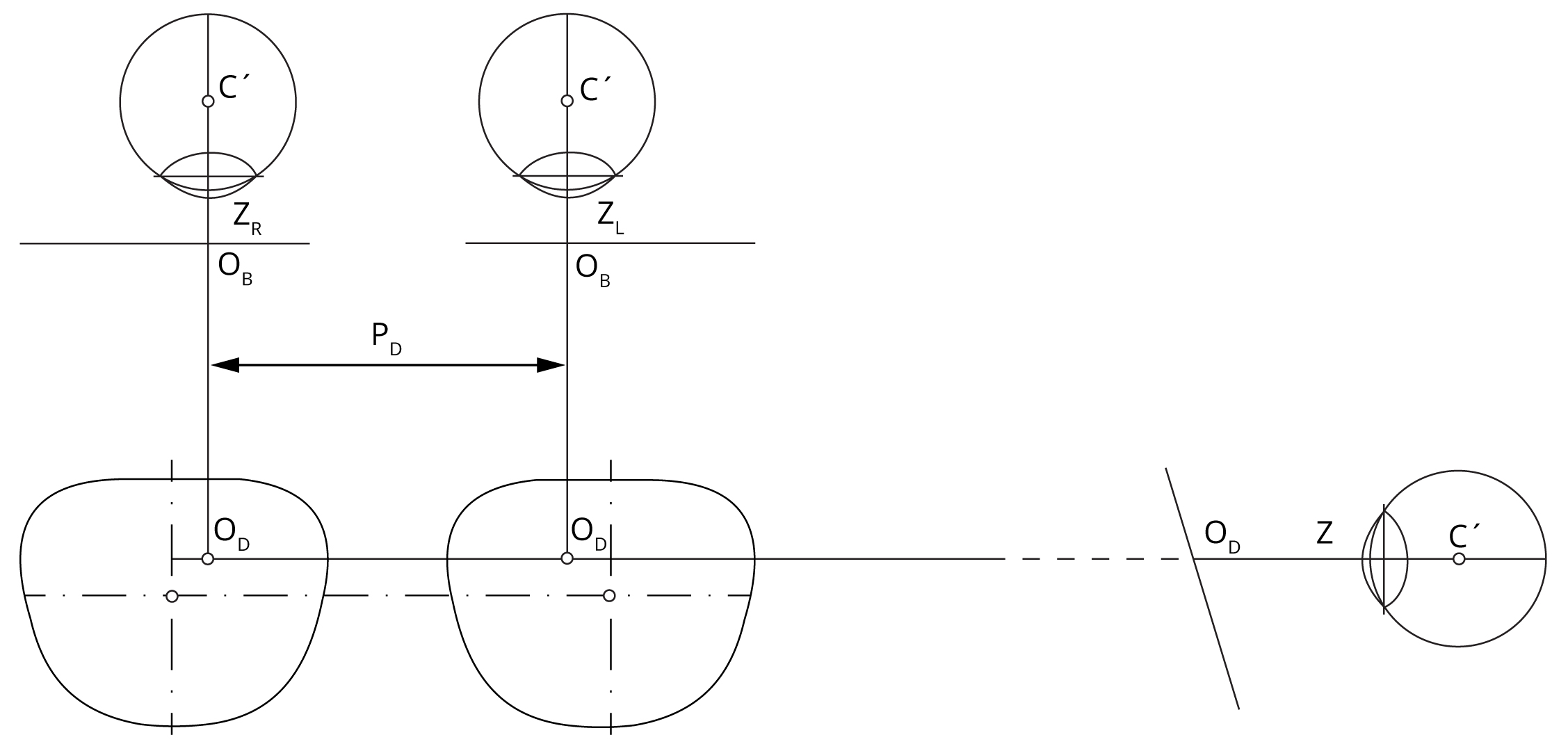Spectacle lens centering according to pupillary position in natural distance view
Introduction
Spectacle lens centering according to pupillary position in natural distance view is usually used in anisometropia correction, high refractive index lenses, lenticular lenses and prism lenses. Spectacle lens’s optical center is placed on pupil if the patient’s head is in natural position during distance view.

Goals
- Find pupillary position during natural distance view with graphic method.
- Calculate pupillary position in horizontal direction right and left.
- Calculate pupillary position in vertical direction right and left.
- Calculate minimal lens diameter of the spectacle lens.
Equipment
Spectacle frame with demo-foil, special pencil for demo-foil, hand PD ruler, calculator
Methods
Find pupillary position during natural distance view with graphic method.
Patient wears spectacle frame safely without its moving from head. Mark pupillary position on the spectacle’s demo-foil if the patient looks into infinity with natural head position. If there is the difference between high of the patient and examiner you can seat the patient. If seat patient check the natural patient’s head position for far.
With PD ruler measure horizontal and vertical distance from pupil position to edge of the spectacle eye. Measurements follow the boxing system. Note final results.
Calculate pupillary position in horizontal direction right and left.
According the boxing system measure width of the right spectacle eye. Horizontal position of the right pupil in right spectacle eye subtract from the half of spectacle eye width. The same is realized for the left eye.
If the decentration is plus you will move with the lens in nasal direction.
Calculate pupillary position in vertical direction right and left.
According the boxing system measure high of the right spectacle eye and its half subtract from vertical position of the right pupil in right spectacle eye. The same is realized for the left eye.
If the value is negative you will move with the lens in down direction.

Calculate minimal lens diameter of the spectacle lens.
According to exercise 3 calculate minimal lens diameter.
Results
Draw schematic drawing of spectacle frame with pupil’s position marks. Graphically realize lens decentration in spectacle frame according the boxing system.
hR =
hL =
vR =
vL =
MINøR = (min lens diameter)
MINøL = (min lens diameter)
Discussion
Spectacle lens’ optical centers are centered on pupils during natural head position in anisometropic correction, high refractive index lenses, lenticular lenses and prism lenses. In anisometropia we eliminate vertical prism difference for right and left eye. In high refractive index lenses we reduce effect of rays’ dispersion. In lenticular lenses we allow to patient to use maximum of lenses’ visual field. In prism lenses we can guarantee exact prism effect in natural distance view.
Conclusion, notes, comments
Define differences between spectacle lens centering according to pupil position during natural head position and position with so called perpendicular view.
Calculate additional prism effect during distance viewing if the patient wears +5 on OD and +2 on OS. Lenses were centered on the real eye rotation centre, i.e. on perpendicular view. Vertical decentration was 3 mm. Is this prism effect important?